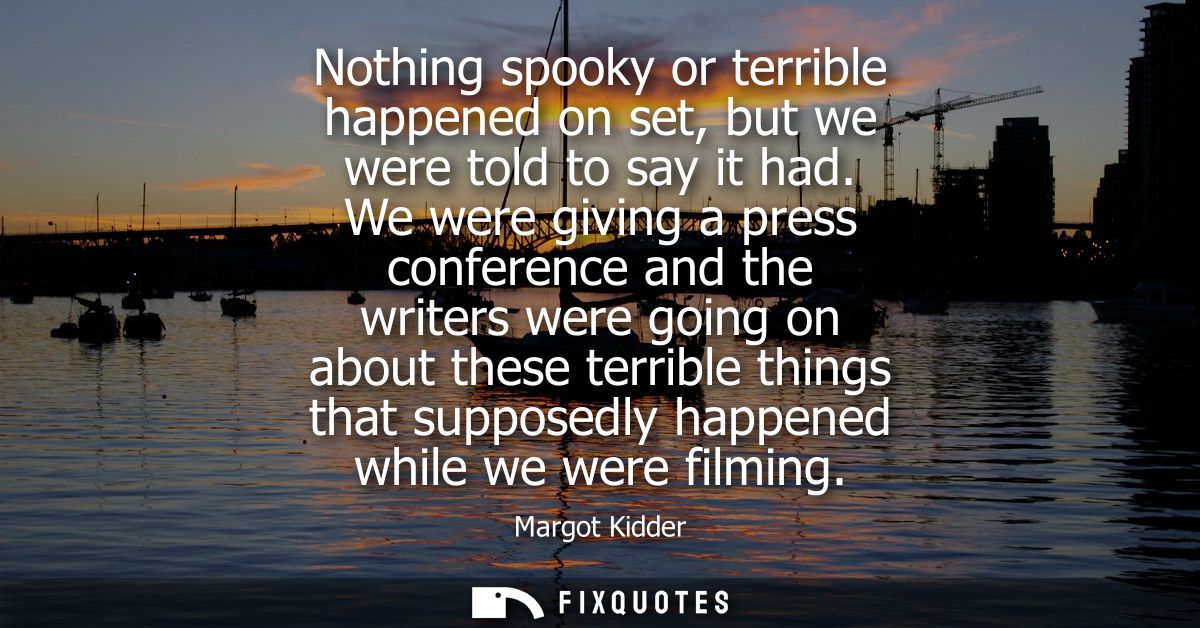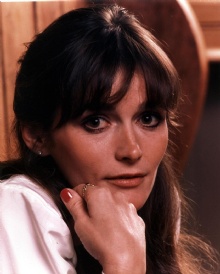"Nothing spooky or terrible happened on set, but we were told to say it had. We were giving a press conference and the writers were going on about these terrible things that supposedly happened while we were filming"
About this Quote
Margot Kidder’s recollection offers a candid look behind the scenes of Hollywood’s approach to marketing, specifically revolving around horror films or movies aiming to create an eerie aura. She notes that no genuinely frightening or supernatural events took place on set. Yet, despite this reality, the cast was instructed to publicly claim otherwise – to embellish or outright fabricate tales of mysterious or spine-chilling incidents during production. This fabrication came not from the performers themselves but was requested, or perhaps even expected, by the film's handlers including the writers and those orchestrating the press conference.
The creators seemingly believed that suggesting strange or disturbing things happened during filming would add intrigue and allure to the movie's public image. By cultivating a mystique of real-life peril or unexplained phenomena, marketers hope to deepen audience engagement and spark the imagination. The aim is to fuel fan curiosity and to blur the line between fiction and reality, a tactic that has been used frequently in film history, especially with horror or thriller genres. Such stories can take on a life of their own, snowballing into urban legends or popular talking points, effectively promoting the movie beyond conventional advertising means.
For the actors, like Kidder, these directives could feel disingenuous, as it means participating in a constructed narrative that serves publicity above authenticity. The “terrible things” referenced by the writers at the press conference were not genuine experiences, but rather sensational tales crafted for effect. Kidder’s statement pulls the curtain back on how show business sometimes operates, revealing a conscious effort to manipulate audience perception for commercial benefit. This insight is valuable not just for its honesty, but also as a reminder of the divide that can exist between the reality of film production and the stories circulated to the public, reminding us to be skeptical of too-convenient myths attached to celebrated or notorious productions.
About the Author

